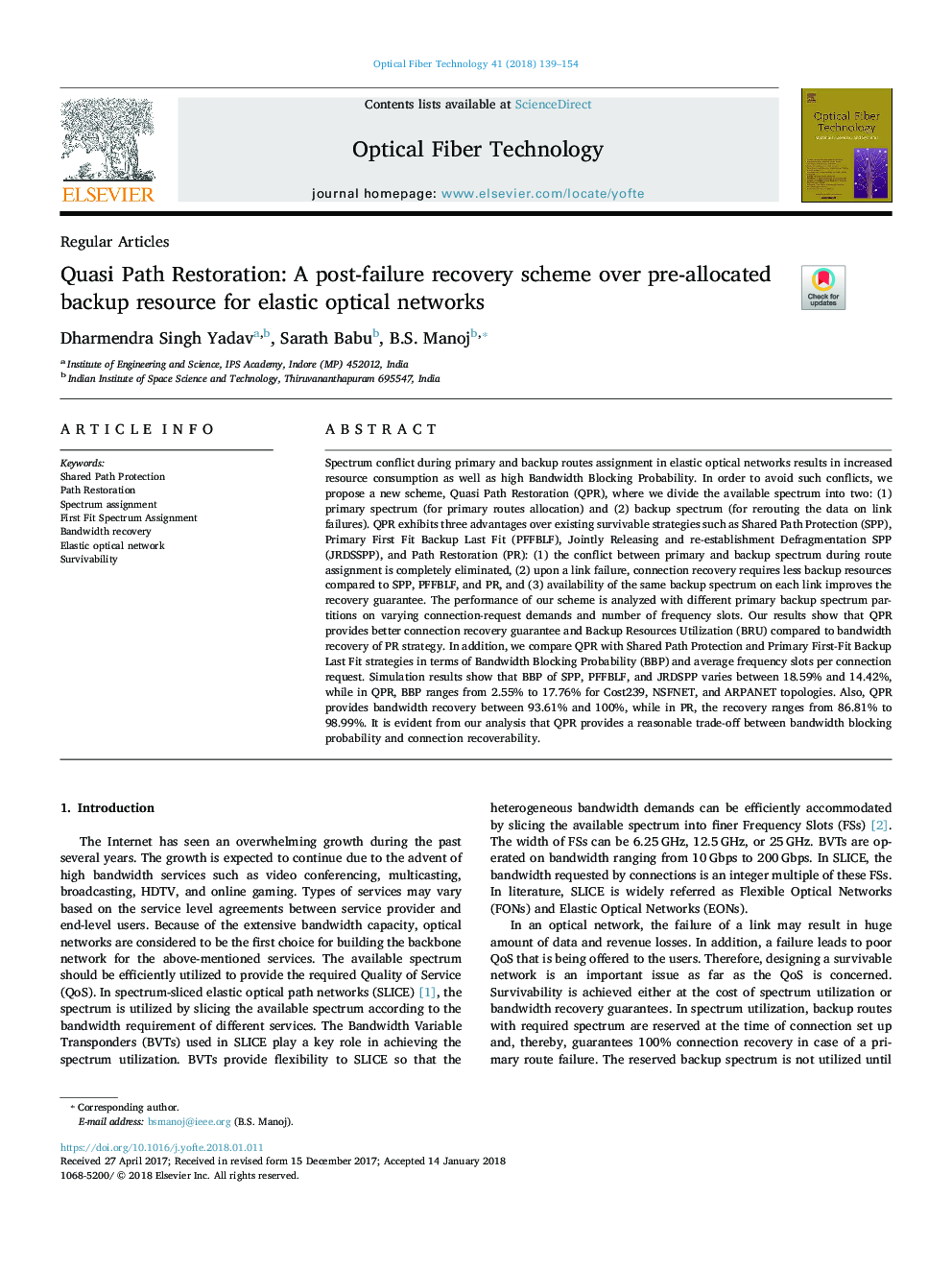| کد مقاله | کد نشریه | سال انتشار | مقاله انگلیسی | نسخه تمام متن |
|---|---|---|---|---|
| 6888335 | 1444922 | 2018 | 16 صفحه PDF | دانلود رایگان |
عنوان انگلیسی مقاله ISI
Quasi Path Restoration: A post-failure recovery scheme over pre-allocated backup resource for elastic optical networks
دانلود مقاله + سفارش ترجمه
دانلود مقاله ISI انگلیسی
رایگان برای ایرانیان
کلمات کلیدی
موضوعات مرتبط
مهندسی و علوم پایه
مهندسی کامپیوتر
شبکه های کامپیوتری و ارتباطات
پیش نمایش صفحه اول مقاله

چکیده انگلیسی
Spectrum conflict during primary and backup routes assignment in elastic optical networks results in increased resource consumption as well as high Bandwidth Blocking Probability. In order to avoid such conflicts, we propose a new scheme, Quasi Path Restoration (QPR), where we divide the available spectrum into two: (1) primary spectrum (for primary routes allocation) and (2) backup spectrum (for rerouting the data on link failures). QPR exhibits three advantages over existing survivable strategies such as Shared Path Protection (SPP), Primary First Fit Backup Last Fit (PFFBLF), Jointly Releasing and re-establishment Defragmentation SPP (JRDSSPP), and Path Restoration (PR): (1) the conflict between primary and backup spectrum during route assignment is completely eliminated, (2) upon a link failure, connection recovery requires less backup resources compared to SPP, PFFBLF, and PR, and (3) availability of the same backup spectrum on each link improves the recovery guarantee. The performance of our scheme is analyzed with different primary backup spectrum partitions on varying connection-request demands and number of frequency slots. Our results show that QPR provides better connection recovery guarantee and Backup Resources Utilization (BRU) compared to bandwidth recovery of PR strategy. In addition, we compare QPR with Shared Path Protection and Primary First-Fit Backup Last Fit strategies in terms of Bandwidth Blocking Probability (BBP) and average frequency slots per connection request. Simulation results show that BBP of SPP, PFFBLF, and JRDSPP varies between 18.59% and 14.42%, while in QPR, BBP ranges from 2.55% to 17.76% for Cost239, NSFNET, and ARPANET topologies. Also, QPR provides bandwidth recovery between 93.61% and 100%, while in PR, the recovery ranges from 86.81% to 98.99%. It is evident from our analysis that QPR provides a reasonable trade-off between bandwidth blocking probability and connection recoverability.
ناشر
Database: Elsevier - ScienceDirect (ساینس دایرکت)
Journal: Optical Fiber Technology - Volume 41, March 2018, Pages 139-154
Journal: Optical Fiber Technology - Volume 41, March 2018, Pages 139-154
نویسندگان
Dharmendra Singh Yadav, Sarath Babu, B.S. Manoj,